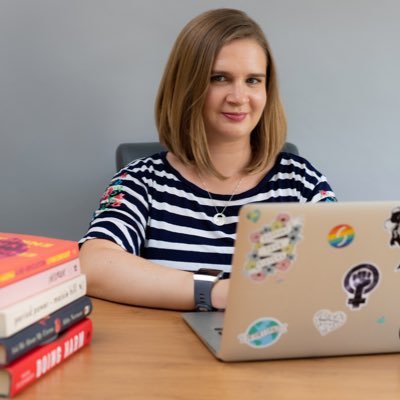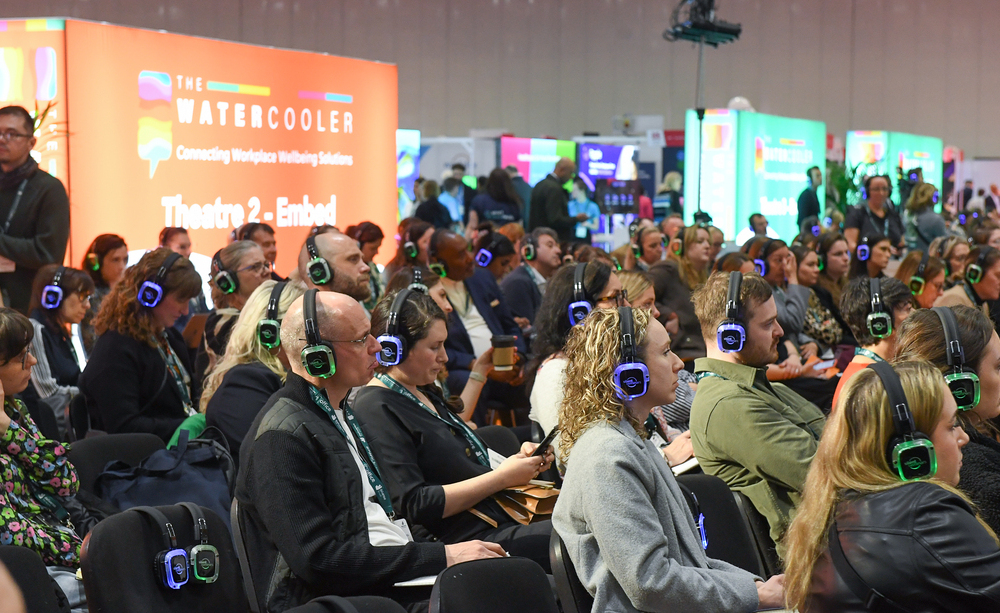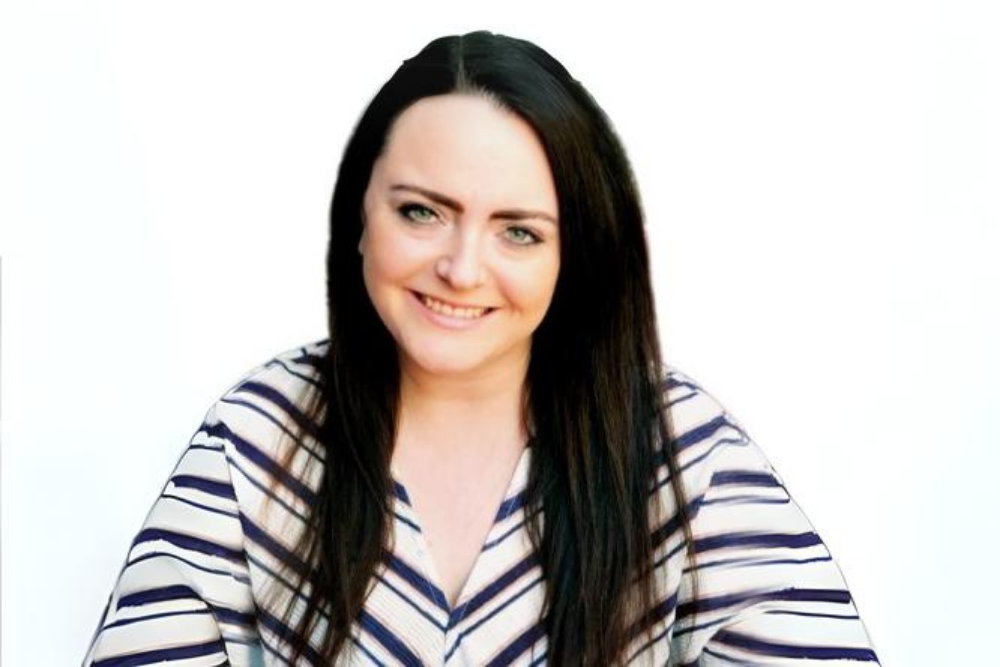Author Sarah Graham admits that, at this stage, she is practically “unshockable” when it comes to the extent women are not listened to, or not treated humanely, regarding their health; the women’s health gap is less of a gap, and more of a gorge.
She’s become somewhat “desensitised”, she says. And no wonder – have a look at her popular blog Hysterical Women and you’ll read about many women telling their heart-wrenching stories of being shamed, stigmatised, humiliated, invalidated and ridiculed for talking about their bodies to health professionals. This blog led to the publication of her book – Rebel Bodies; a guide to the gender health gap revolution.
The massive discrepancy between the way the genders are treated, and how their bodies work, proves why there is such need for a women’s health strategy – which we finally have now, in 2023. But does she think this goes far enough? And what does she see as the role of the employer when it comes to women’s wellbeing?
We caught up with her to get real about one of the buzziest topics currently in the wellbeing industry.

(You can also meet her in person at our Lunch & Learn on the gender health gap on 2nd March 2023, see end of article for full details).
What are your thoughts on the Government’s new women’s health strategy?
Generally speaking, it is a good thing. A positive step in the right direction.
But I’m not wholly sold on the actual contents of the strategy.
Why aren’t you ‘sold’ on the contents of the new women’s health strategy?
It lacks much detail. Some of the commitments are very vague. For example, it talks about reducing the waiting times for diagnosing people with endometriosis but doesn’t stipulate by how much.
The big concern that I, and several others across the sector have, is that there doesn’t seem to be a huge amount of new, dedicated funding to pay for it. It appears that its ambitions are going to have to be achieved from existing budgets, which we know already are very stretched.
There have been quite a few reports published recently – like from McKinsey, Deloitte and AXA – showing that women are struggling with their wellbeing at work more than ever, and certainly much more than men. What’s your gut feeling for what the main driver of this could be?
It’s difficult to say. We know that the last few years have been really tough on women, particularly on mothers during the pandemic. On the positive side, we’ve seen improvements because the pandemic opened employers’ eyes to the benefits of homeworking and more flexible approaches.
So, the current expectation of going back to pre-pandemic norms has actually been really tough on women from a from a mental health perspective.
You’re joining us for our webinar on 2nd March on the gender health gap. Without giving too much away, can you give us a taster of the top line practical, actionable solutions for advocating for wellness equity that you might touch on? We know our readers read from both a personal and professional perspective.
Absolutely. My book is all about practical solutions, with each chapter ending with a ‘tool kit’ of tailored advice. A lot of it hinges on knowing your body, and knowing what is normal for you.
I suggest doing things like tracking symptoms and your menstrual cycle, for example. Then, if you notice something is off, you can see patterns and explain this with evidence to your doctor.
Another thing that I talk about frequently in the toolkits is the importance of understanding the patient-doctor dynamic, and having confidence in your own expertise.
We often have this attitude that ‘doctor knows best’ and ‘whatever the doctor says goes’. We can discount our own expertise, as the people living inside our own bodies. But, actually, that expertise is different from the expertise that a doctor or healthcare professional has, but it’s important and it’s complementary.
Women need to be aware that you can ask for a second opinion, that you can disagree with your doctor or that you can ask them to justify their opinion or suggested treatment plan.
I imagine this could be very difficult for many women who might feel vulnerable speaking up in this situation, particularly if worried about their health. Any tips for getting over this and finding a voice?
Take an advocate with you to appointments.
And, in terms of employers, they can give employees the flexibility to make and attend these appointments in the first place, which is often a big barrier I hear of.
Another helpful thing employers can do is good signposting; having health information readily available, whether that is through a workplace package or via a comms channel like an intranet.
Just having links to websites or leaflets around the workplace or posters in toilets creates a culture where we can talk about these subjects.
We cover occupational health a lot – did you come across any differences between doctors working in the NHS and in occupational health?
My research has very much been NHS focused. However, what I would say is that – across the board, like in every industry – you will have some doctors that are very good, aware of these issues and very conscious of their privilege and potential for unconscious bias. And you will have those who are not.
Your blog tells some awful stories of how doctors have treated women (both female and male doctors, I should make clear). How do you think we can make more doctors aware of their biases and privilege?
Change depends on people being prepared to challenge them. Then recognising that the professional’s response depends on the kind of person they are. Some will always be very defensive. Others will be more receptive to feedback and criticism than others. A bit like when you’re having a family debate about politics or a contentious issue around the dinner table!
Traditionally, doctors have had the power in the dynamic leading to, historically, a sense that doctors are all-knowing figures. Do you think that is still as strong?
There are reasons that medicine still does have a bit of a reputation for egos and God complexes. To some extent, I think some of it is perhaps generational. Speaking to younger doctors, students and graduates, the approach to consultations is shifting.
There is more of a focus now on a model called ‘ICE’, which stands for ideas, concerns and expectations. This means doctors are now being encouraged much more to consider the patient and ask questions like: what are the patient’s ideas about what’s wrong? What are their concerns? And what are they expecting to get out of the consultation?
That is a move towards a more holistic, person-centred approach. But there is still a big cultural issue that will take time to shift.
How can we encourage this shift?
Much more needs to happen at a medical education level to make doctors aware of these issues and make them consider that the patient in front of them has expertise of their own, and that expertise needs to be listened to and taken on board.
We know that the NHS budgets are hugely stretched. Arguably there’s an opportunity here for employers to step in on that education piece?
Yes, definitely. Training is a huge, huge part of it. Especially around unconscious bias.
Also, one women that I interviewed for the book was involved with an organisation called Black Minds Matter. She said the NHS is struggling to cope with the basics on mental health; it can provide, perhaps, CBT (cognitive behavioural therapy) for mild depression and anxiety… but forget about dealing with something really complex like intergenerational trauma caused by racism, racist violence and colonialism.
I’m not sure whether workplaces can deal with this either, and I’m not sure what the solution could be, but employers could be part of finding it.
Where else could employers do more when it comes to women’s health?
Employers are getting much better at talking about things like menopause and menstrual and reproductive health. But there are still big gaps around things like chronic illnesses and disabilities.
Many more misunderstood conditions like fibromyalgia disproportionately affect women. I don’t think workplaces have got their heads around dealing with these kind of conditions because they are much less predictable. They’re often long term and fluctuating, which is tricky to manage from a workplace perspective.
Often, too, women are told ‘there’s nothing wrong with you. It’s all in your head. Tests can’t find anything’ by health professionals. Workplaces could definitely be more supportive here.
If there was one message, you’d like to get out to our audience of healthcare professionals, what would it be?
Recognise that women’s health needs are very individual. There isn’t a ‘one size fits all’.
I’ve been having a lot of conversations in the last few years about things like menstrual leave policies and menopause leave policies. The really key thing with any policy like this is that what one woman needs is not the same as what the next woman needs. So the policy needs to be flexible and adapt. It needs to be able to be personalised. Employers also need to have grown-up conversations with people, rather than just saying ‘this is the policy, and if it doesn’t suit you, then tough!’.
It all comes down to creating a culture where it’s possible to have open and adult conversations where people feel that it is safe for them to express their needs, and that these needs will be taken into consideration.
Sarah is a panellist on our forthcoming Lunch & Learn Webinar: Closing the Gender Health Gap: Addressing women’s health at work. She’ll be accompanied by Lauren Lunniss, Wellbeing Manager, BNP Paribas, Francesca Steyn, Director of Fertility and Women’s Health and Peppy’s Catrin Smith, Representative. See here to find out more and register for free.
You might also like:

















